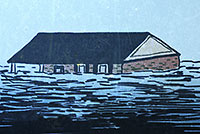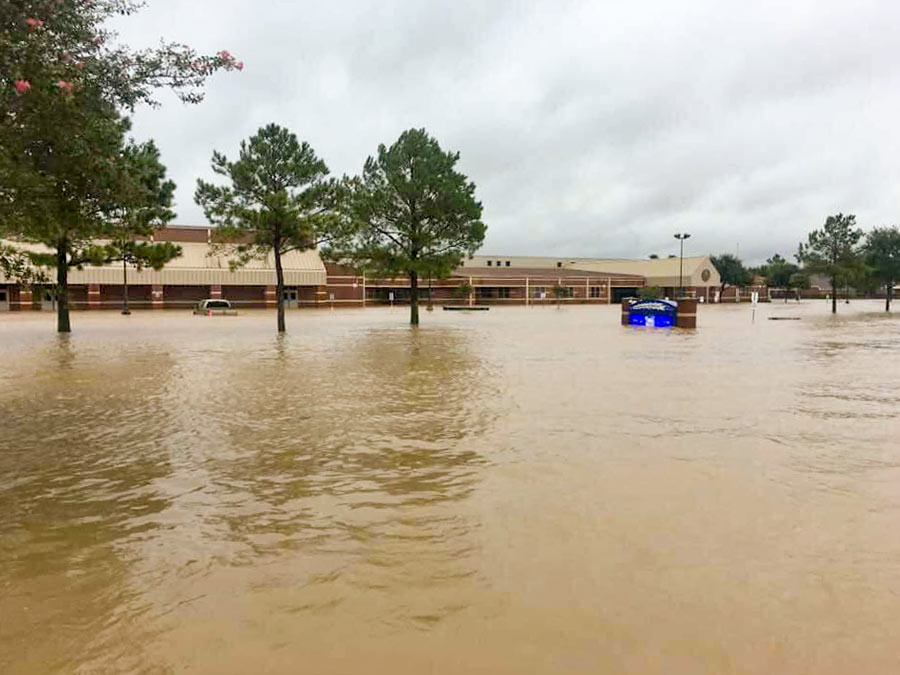COMMENT OF THE DAY: A HISTORICAL METHOD OF EXPANDING HOUSTON’S FLOODPLAINS  “Another recent policy development is that subsidence is now taken very seriously (with massive infrastructure being built to put utility districts onto surface water from Lake Houston and the Trinity River). But it was a very, very big problem up until around 1990. So you had all this sprawling development inside of Beltway 8, and off of 1960, and out near West Oaks, and there wasn’t adequate on-site or off-site stormwater retention infrastructure that had been built — and that same development thereafter was sinking at a steady rate, so that any flood control infrastructure was becoming increasingly obsolescent for reasons other than simply rainfall rates and runoff.” [The Niche, commenting on Comment of the Day: Who Foots the Bill for Houston Floods] Illustration: Lulu
“Another recent policy development is that subsidence is now taken very seriously (with massive infrastructure being built to put utility districts onto surface water from Lake Houston and the Trinity River). But it was a very, very big problem up until around 1990. So you had all this sprawling development inside of Beltway 8, and off of 1960, and out near West Oaks, and there wasn’t adequate on-site or off-site stormwater retention infrastructure that had been built — and that same development thereafter was sinking at a steady rate, so that any flood control infrastructure was becoming increasingly obsolescent for reasons other than simply rainfall rates and runoff.” [The Niche, commenting on Comment of the Day: Who Foots the Bill for Houston Floods] Illustration: Lulu





That’s very interesting. I have a link somewhere that shows Meyerland sinking some number of inches from the 1970-1990s, so it’s like a perfect storm of bad flood control infrastructure AND poor water management.
I googled “Meyerland subsidence,” and one of the first results? This 2009 Swamplot post (http://swamplot.com/measuring-progress-in-cubic-feet-per-second/2009-08-14/). It’s like we are in an echo chamber, just saying the same things over and over, with nothing to show for it but sore throats and arthritic fingers.
For detailed Meyerland data, follow the link below, scroll down to the very bottom of the page, and click on the link for the Southwest extensometer. On that page you can click on the “Display Location Map” link to see where the meter is located. In this case its near the intersection of S. Post Oak & W. Bellfort, so a good proxy for Meyerland. There are also other links that provide a deeper and more general history, although with less detail.
http://hgsubsidence.org/subsidence-data/
I know I’ve heard of huge subsidence depths in the galveston and Ship Channel areas and so googled it.
This is an interesting UH paper:
http://www.hindawi,com/journals/ijge/2014/942834
Thanks for that, movocelot. Check out Figure 1! At approximately 1 inch per year of subsidence between 2006 and 2012, Spring (right around the Exxon campus) has been the epicenter for the very worst subsidence in the region. Its also a problem in Clodine and Dickinson, but jeez, North Harris and Montgomery Counties were seriously bad off. That certainly explains the urgency around switching over to surface water and about building the canal to the Trinity River. I wonder the extent to which that may also explain why some of last week’s flooding was so rapid and so severe out there.
http://www.hindawi.com/journals/ijge/2014/942834/fig1/
I believe the Southwest Extensometer is actually at Westpark and Newcastle. The closest subsidence monitor for Meyerland is located at PAM 41 (roughly S. Post Oak and Bellfort), which has varied +/- 0.2 feet since 2008. One of the most interesting charts can be found at TMCC, located in the Medical Center. TMCC indicates that the Med Center has been steadily RISING, not subsiding since 2011. All this can be found at the heading HGSD KMZ Google Earth map and clicking “Subsidence Monitor Network with Charts” at the site referred to by TheNiche: http://hgsubsidence.org/subsidence-data (sorry, direct linking doesn’t seem enabled).